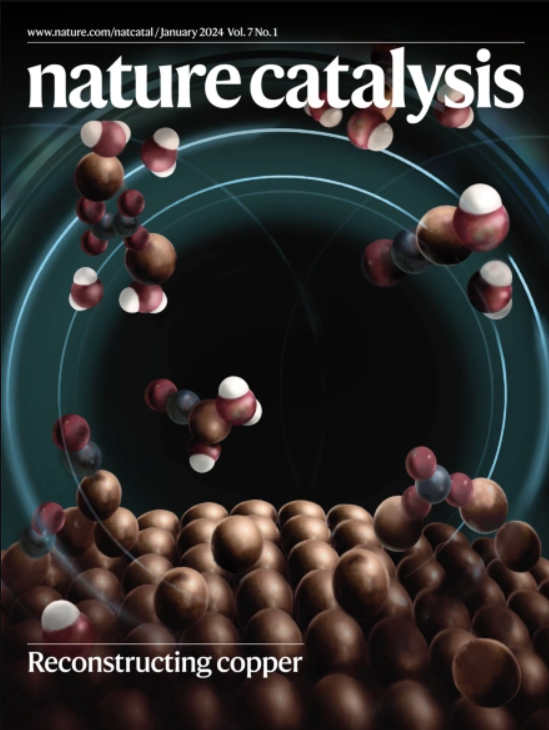Enantioselective macrocyclization via catalytic metallic dipole relay
IF 44.6
1区 化学
Q1 CHEMISTRY, PHYSICAL
引用次数: 0
Abstract
Chiral macrocycles play critical roles across medicinal chemistry and materials science, yet their catalytic asymmetric synthesis remains challenging. Existing methods predominantly rely on intramolecular cyclization of linear precursors and asymmetric resolution of racemic macrocycles, often requiring complex synthesis while offering limited structural diversity. Here, inspired by non-ribosomal cyclopeptide biosynthesis, we present a catalytic metallic dipole relay strategy for the construction of axially chiral macrolactones. This approach enables concise enantioselective synthesis through stepwise strain release in biaryl lactones and dynamic kinetic resolution mediated by π-allyl-Pd dipoles. The method demonstrates broad applicability to medium (up to 91% yield with 93% enantiomeric excess) and large (up to 93% yield with 99% enantiomeric excess and >19:1 diastereomeric ratio) ring systems under mild conditions. By establishing stereochemical control during both medium-ring formation and subsequent macrocyclization, this strategy overcomes traditional limitations in the generation of axial chirality while extending the methodology of transition-metal-catalysed asymmetric cyclization. Despite the importance of chiral macrocycles, their synthesis has lagged behind those of normal and medium-sized rings. Now a bio-inspired catalytic metallic dipole relay strategy enables access to the synthesis of axially chiral 14-, 15- and 20-membered macrocyclic products.


通过催化金属偶极中继实现对映体选择性大环化
手性大环在药物化学和材料科学中发挥着至关重要的作用,但它们的催化不对称合成仍然具有挑战性。现有的方法主要依赖于线性前体的分子内环化和外消旋大环的不对称分解,通常需要复杂的合成,同时提供有限的结构多样性。在这里,受非核糖体环肽生物合成的启发,我们提出了一种催化金属偶极子接力策略来构建轴向手性大内酯。该方法通过双芳基内酯的逐步应变释放和π-烯丙基- pd偶极子介导的动态动力学分解,实现了简明的对映选择性合成。该方法在温和条件下广泛适用于中环体系(产率高达91%,对映体过量93%)和大环体系(产率高达93%,对映体过量99%,非对映体比为19:1)。通过在中环形成和随后的大环化过程中建立立体化学控制,该策略克服了传统的轴向手性生成限制,同时扩展了过渡金属催化的不对称环化方法。
本文章由计算机程序翻译,如有差异,请以英文原文为准。
求助全文
约1分钟内获得全文
求助全文
来源期刊

Nature Catalysis
Chemical Engineering-Bioengineering
CiteScore
52.10
自引率
1.10%
发文量
140
期刊介绍:
Nature Catalysis serves as a platform for researchers across chemistry and related fields, focusing on homogeneous catalysis, heterogeneous catalysis, and biocatalysts, encompassing both fundamental and applied studies. With a particular emphasis on advancing sustainable industries and processes, the journal provides comprehensive coverage of catalysis research, appealing to scientists, engineers, and researchers in academia and industry.
Maintaining the high standards of the Nature brand, Nature Catalysis boasts a dedicated team of professional editors, rigorous peer-review processes, and swift publication times, ensuring editorial independence and quality. The journal publishes work spanning heterogeneous catalysis, homogeneous catalysis, and biocatalysis, covering areas such as catalytic synthesis, mechanisms, characterization, computational studies, nanoparticle catalysis, electrocatalysis, photocatalysis, environmental catalysis, asymmetric catalysis, and various forms of organocatalysis.
 求助内容:
求助内容: 应助结果提醒方式:
应助结果提醒方式:


